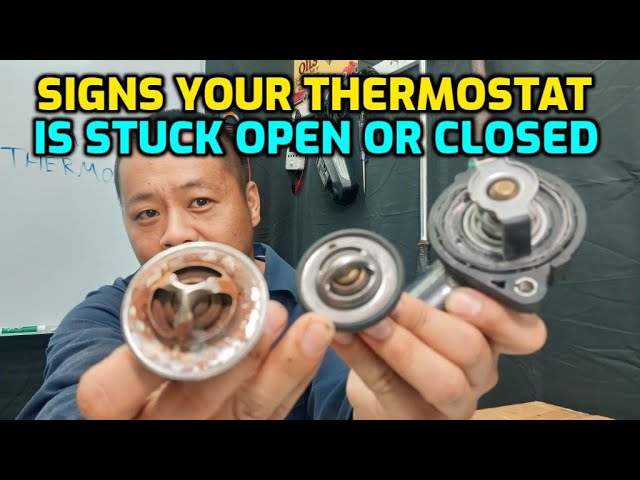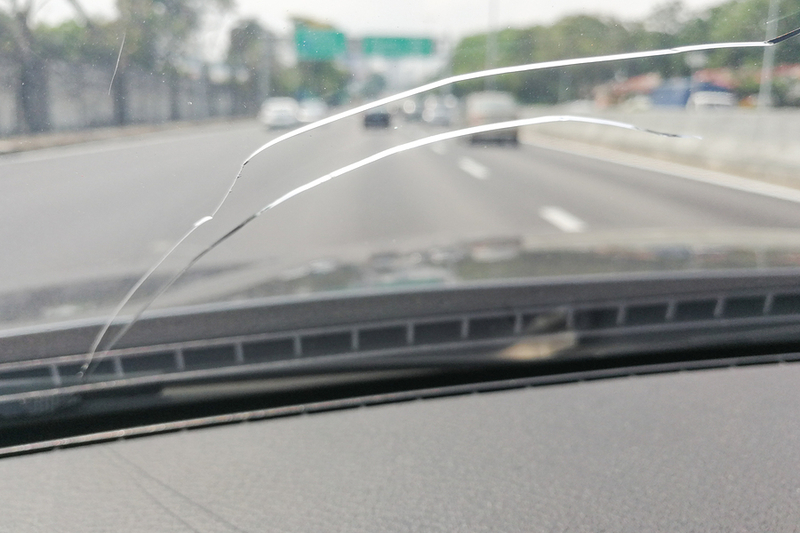How Long Can You Drive With a P0128 Code
It’s not advisable to drive with a P0128 code for an extended period. Prolonged driving may cause engine inefficiency and potential damage.
A P0128 code indicates that your vehicle’s engine is running colder than optimal, often due to a malfunctioning thermostat or a fault in the coolant temperature monitoring system. Addressing this error promptly is crucial, as the code suggests that the engine isn’t reaching its required temperature for efficient operation.
While the vehicle can often still be driven for short distances without immediate harm, ignoring the code can lead to decreased fuel economy, increased emissions, and, over time, significant engine wear or damage. Early intervention can save you from the cost and inconvenience of larger repairs, ensuring your vehicle remains reliable and on the road. Regular maintenance and attention to your car’s diagnostic signals like the P0128 code are essential for optimal performance and longevity.
Decoding The P0128 Code
P0128 is a diagnostic trouble code (DTC) you don’t want to ignore. It signifies issues with your vehicle’s cooling system. Specifically, this code points to a thermostat or engine coolant temperature (ECT) sensor malfunction. Understanding this code is crucial for maintaining your vehicle’s health and performance.
When your car’s onboard computer detects that the engine hasn’t reached its required operating temperature within a specific time frame, it triggers the P0128 code. This temperature is important for fuel efficiency and emission control. Ignoring this warning could lead to reduced performance and increased fuel consumption.
The P0128 error may arise from several factors. Here is a quick rundown:
- Thermostat stuck open: The engine takes longer to warm up, affecting performance.
- Low coolant levels: This can prevent proper engine temperature regulation.
- Malfunctioning ECT sensor: A faulty sensor may give incorrect temperature readings.
- Cooling system leaks: Any leaks can disrupt the cooling system’s efficiency.
- Wiring or connection issues: Bad electrical connections can result in inaccurate sensor signals.
Addressing these causes early can save you from extensive repairs and maintain optimal vehicle health.

Credit: www.youtube.com
Risks Of Ignoring The P0128 Code
When your vehicle’s OBD system triggers a P0128 code, it’s essentially waving a red flag at you. This code indicates that the engine coolant is not reaching the required temperature for efficient operation. Ignoring this warning can lead to a variety of issues, categorized here into two critical sections: short-term complications and long-term vehicle damage.
Short-term Complications
Immediate consequences arise if the P0128 code is overlooked. Your car might seem fine, but underlying problems are brewing.
- Reduced fuel efficiency: The engine runs cooler than optimal, consuming more fuel.
- Inconsistent cabin heating: On cold days, the interior might not warm up properly.
- Potential for increased emissions: A cooler running engine impacts emission controls.
Long-term Vehicle Damage
Persistently avoiding the P0128 code could lead to serious engine harm. Over time, the effects compound.
- Engine wear: Operating at low temperatures affects oil viscosity and lubrication.
- Emission system failure: The catalyst and sensors may degrade due to poor temperature control.
- Head gasket stress: Fluctuations in temperature expand and contract engine components, leading to possible head gasket failure.
- Complete engine breakdown: Worst case, a neglected engine faces an untimely demise.
Immediate Actions Post-code Detection
Immediate Actions Post-Code Detection are crucial when your vehicle’s diagnostic system flags a P0128 code. This code signals a cooler-than-normal operating temperature, often due to a malfunctioning thermostat or low coolant level. Ignoring this warning can lead to engine inefficiency, increased emissions, or even severe damage. Here’s what to do right away to address the issue:
Check The Coolant
Start by inspecting the coolant level. Low coolant can trigger a P0128 code:
- Locate the coolant reservoir in your engine bay.
- Verify coolant level against the marked lines.
- Refill if levels are below the recommended mark.
Remember that coolant concentration matters too. Use a 50/50 mix of coolant and water.
Evaluate The Thermostat
The thermostat regulates engine temperature:
- Look for the thermostat housing near your engine.
- Notice if your engine takes longer to warm up.
- Monitor temperature gauges on your dashboard.
A stuck-open thermostat often causes a P0128 code. This fails to bring the engine up to the proper temperature. If suspicions arise, have a professional check the thermostat function.

Credit: www.way.com
Driving Duration With P0128: Advisable Limits
A P0128 code can be a sign to check your vehicle. It often means the engine is not getting warm enough. It’s vital to know how far you can safely drive. Ignoring the P0128 can lead to larger issues. This section will guide you on the advisable limits for driving with this code.
Safe Distance To Drive
The safe distance to drive with a P0128 code is not set in stone. It depends on your car’s behavior. Some vehicles may run smoothly for weeks. Others might show problems quickly. The best approach is to drive to the nearest service center. If the center is far, avoid driving long distances. Prolonged driving can damage the engine.
Symptoms To Watch Out For
Paying attention to how your car feels is key.
- Temperature gauge reading low – Check if the gauge stays low while driving.
- Lack of heat from vents – This can mean the engine is too cool.
- Check Engine Light remains on – Take it as a clear sign to act fast.
Spotting these symptoms early can save your car. If you notice them, stop driving. Call for a car service. They can help fix the P0128 code issue.
Fixing The P0128 Error
Driving with the P0128 code can mean your engine isn’t reaching the proper temperature, often due to thermostat failure. It’s essential to address swiftly to maintain optimal performance and fuel efficiency. Let’s explore repair options.
Professional Mechanic Vs Diy
Facing a P0128 error leaves you with two paths: seeking a professional mechanic or tackling the problem yourself. Each approach has pros and cons.
- Professional Mechanic: They have the expertise to diagnose and fix issues accurately.
- DIY: This option can save money, but requires a level of mechanical knowledge.
Consider your skill level and the complexity of the repair before deciding which route to take.
Estimated Repair Costs
The cost to fix a P0128 code can vary widely based on several factors:
| Repair | DIY Cost | Professional Cost |
|---|---|---|
| Thermostat Replacement | $20-$50 | $100-$250 |
| Coolant Flush | $10-$25 | $50-$150 |
| Sensor Replacement | $25-$100 | $150-$300 |
Prices fluctuate by region and vehicle model. Always seek multiple quotes or price check parts if going the DIY route.
Preventive Measures For Future
Ignoring a P0128 code can lead to bigger car troubles. Good habits can save you from costly repairs. Take small steps to prevent future issues. Let’s talk about maintenance and monitoring for a healthy car.
Regular Maintenance Tips
Keeping a car happy means regular check-ups. Think of it as a health routine for your vehicle. Here are some quick tips to keep your ride running smoothly:
- Check Fluids: Oil, coolant, and brake fluid levels need regular attention.
- Inspect Belts and Hoses: Cracks or wear can lead to bigger problems. Replace if needed.
- Change the Air Filter: A clean filter means a better-running engine.
- Get Frequent Oil Changes: Old oil can hurt your engine. Follow your car’s oil change schedule.
- Read the Manual: Your car’s manual has a service schedule. Stick to it for best performance.
These simple tasks will help keep engine trouble like P0128 at bay.
Monitoring Your Vehicle’s Health
Listen to your car – it speaks. Unusual sounds or changes in handling are your car’s cries for help. Regular monitoring prevents unexpected problems. Here’s how to stay on top of your vehicle’s health:
- Watch the Dashboard: Warning lights are your first hint of trouble. Don’t ignore them.
- Use a Diagnostic Scanner: A scanner can help catch issues early on.
- Feel the Drive: Strange vibrations or shifts in handling? Time for a check-up.
- Check the Temperature Gauge: If it stays low, it might be a P0128 code hinting at a problem.
Stay alert to these signs and take action when needed. Your car will thank you.

Credit: www.way.com
Frequently Asked Questions For How Long Can You Drive With A P0128 Code
What Is A P0128 Code In A Vehicle?
A P0128 code indicates that the engine is running cooler than the optimal temperature as the thermostat is not regulating the engine heat properly. This could lead to reduced fuel efficiency and higher emission levels.
How Urgent Is Fixing A P0128 Trouble Code?
Addressing a P0128 code is important but not immediately critical. Neglect can lead to decreased fuel economy, potential engine damage, and failing an emissions test. Timely repair is recommended to avoid these issues.
Can Driving With A P0128 Code Damage The Engine?
Continuous driving with a P0128 code may result in engine damage. It signifies a malfunctioning thermostat leading to improper engine temperature management, which over time, can harm the engine’s components.
What Repairs Can Fix A P0128 Code?
Typical repairs for a P0128 code include replacing the thermostat, flushing the cooling system, repairing or replacing the wiring or connector to the coolant temperature sensor, or replacing the coolant temperature sensor itself.
Conclusion
Understanding the risks associated with the P0128 code is crucial. Delaying repairs could lead to significant engine damage. Addressing the issue early preserves engine health and ensures safer driving. Don’t ignore the warning; consult a mechanic promptly to enjoy a reliable and efficient vehicle.
Safe travels!





